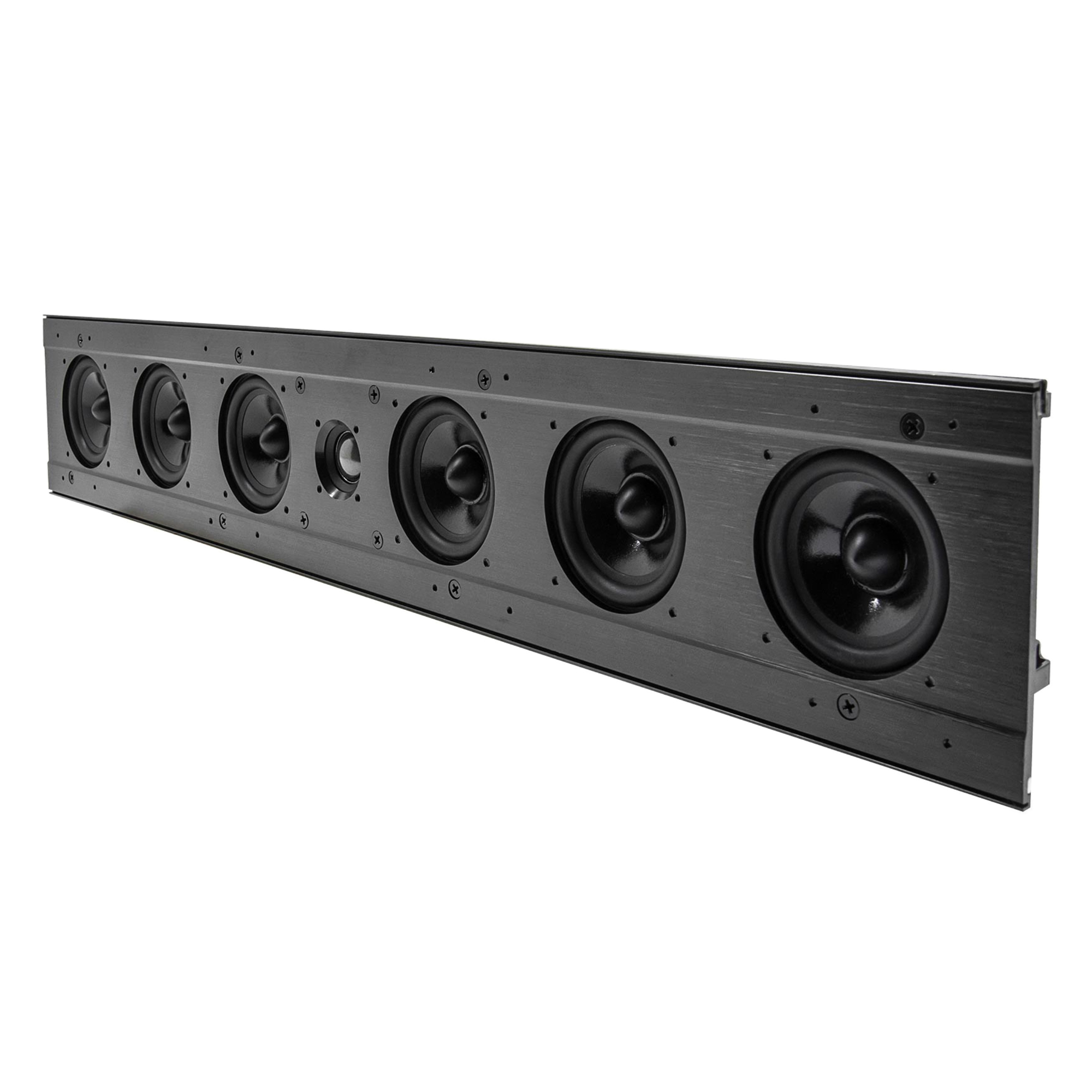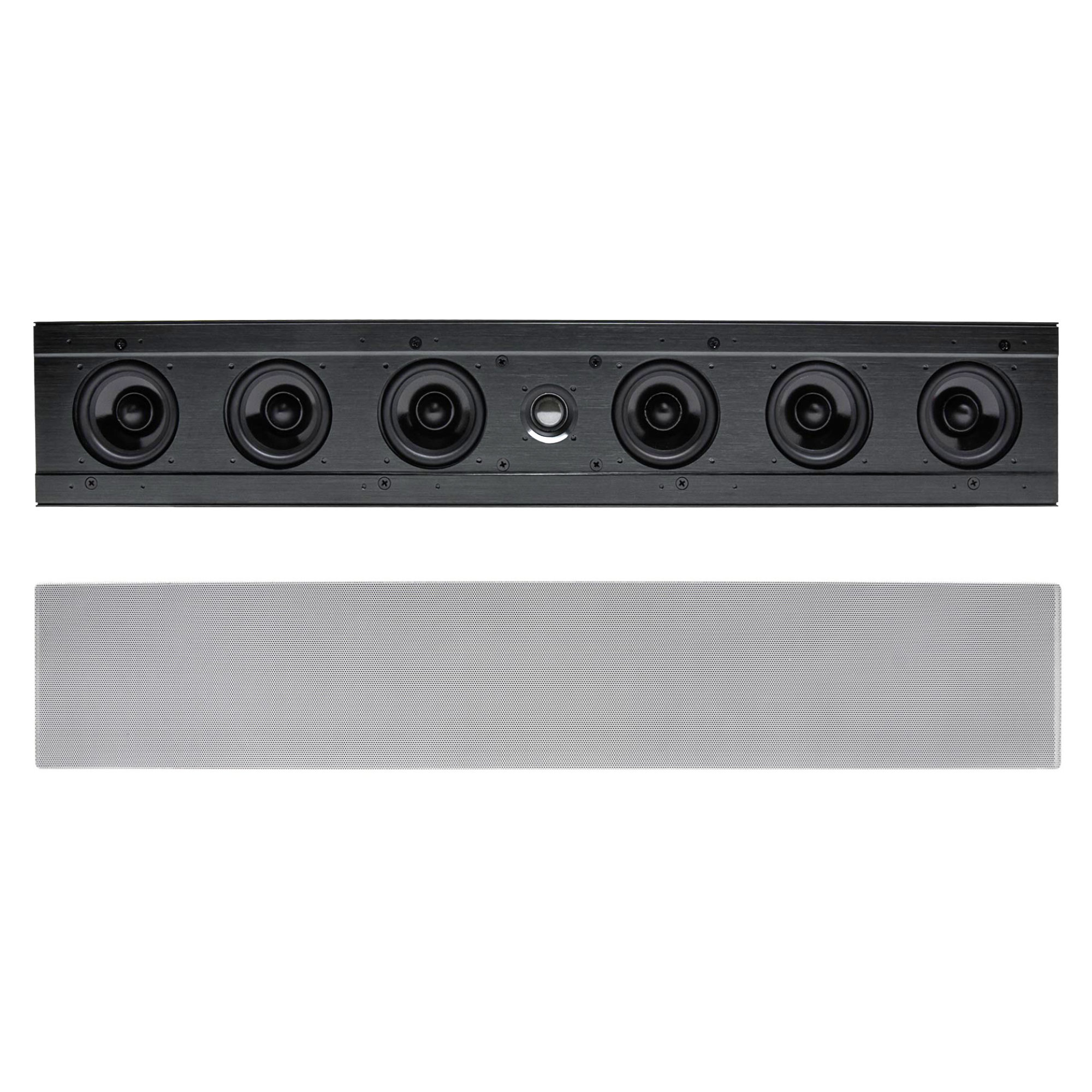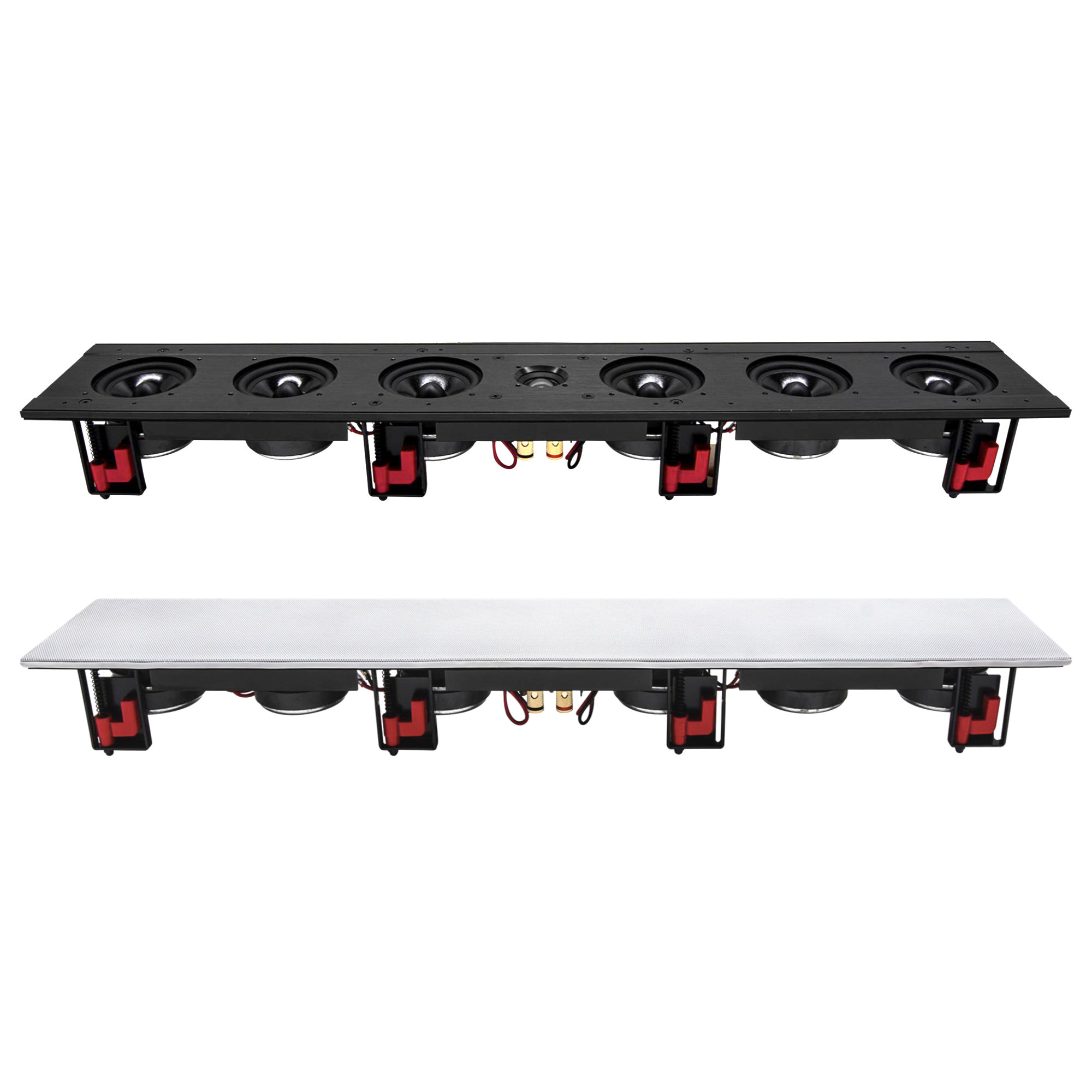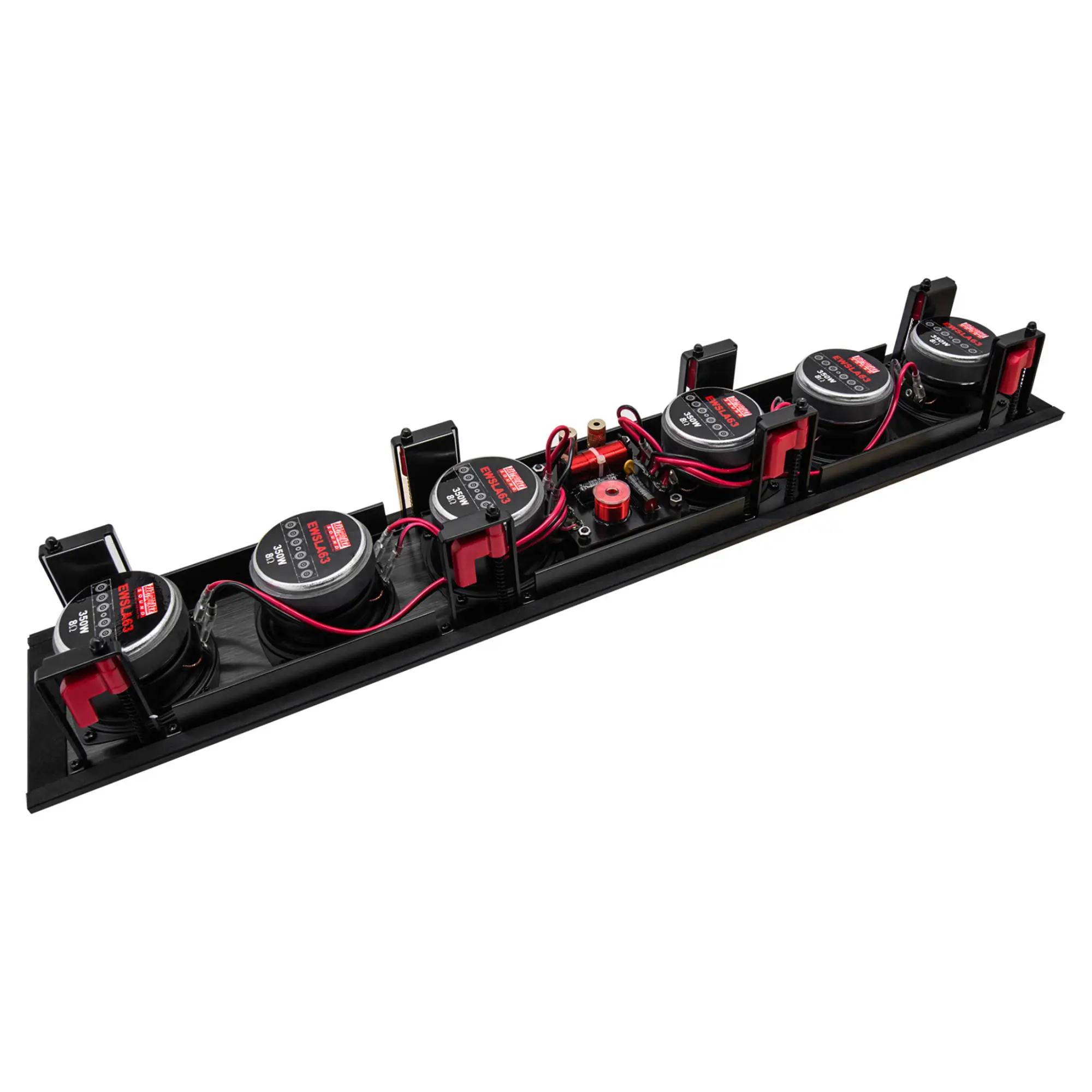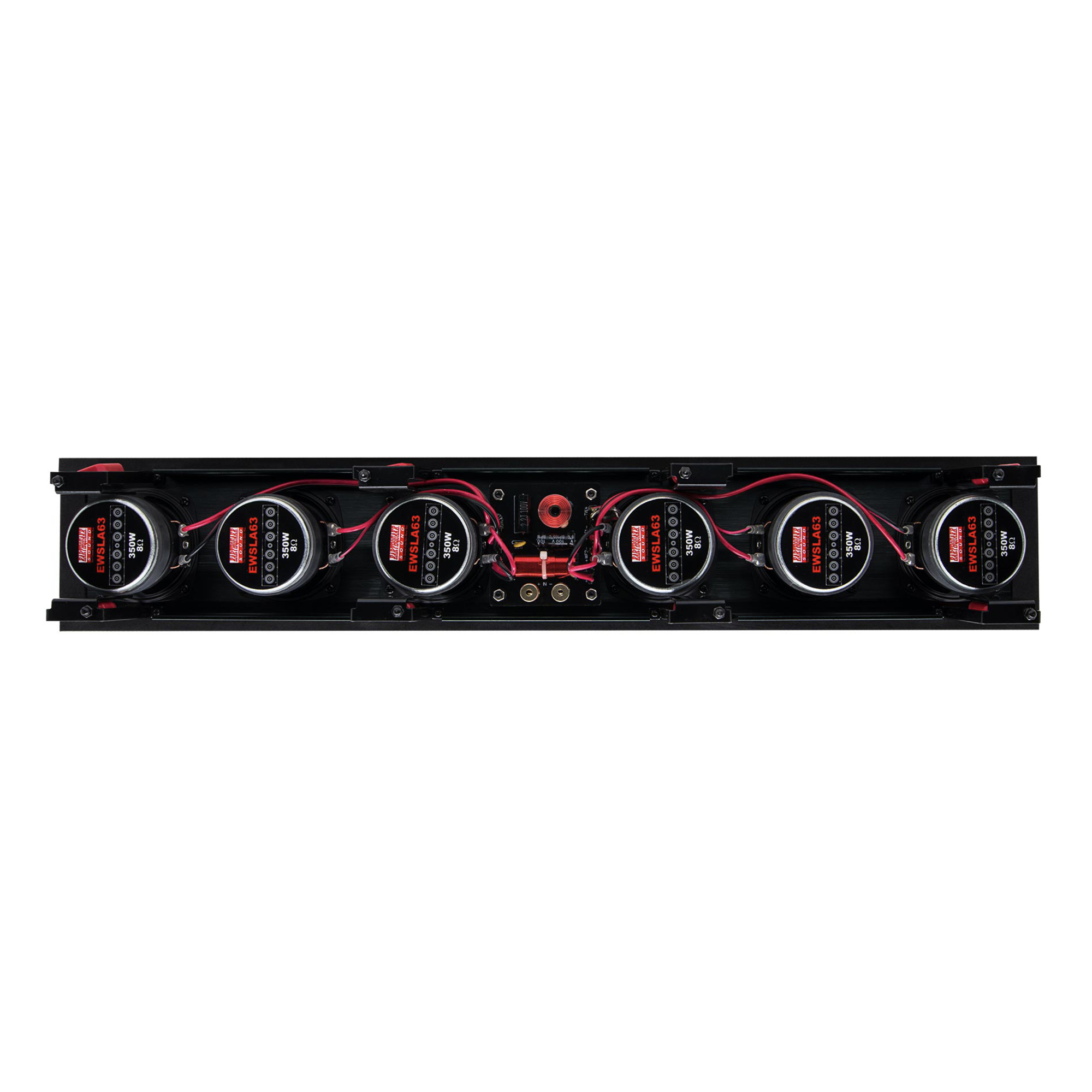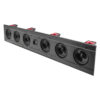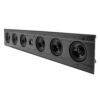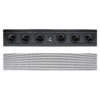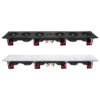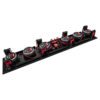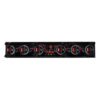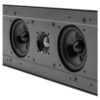Features
-
- 2-way line array LCR speaker
- Six 3″ low mass poly cone full-range drivers
- One 1″ silk dome Neodymium tweeter
- Wide-angle eye-ball tweeter mount for precise directivity
- Elaborate crossover networks
- Stiff resonance-free extruded aluminum (AL6061) body frame
- Easy install Turn-N-Lock™ mechanism
- Edgeless design for reduced visibility/seamless blend
- Gold-plated spring-loaded terminals
- Magnetically attached and paintable grille
Specifications
- Power Handling: 350 Watts Max
- Frequency Response: 40Hz–20kHz
- Nominal Impedance: 8-Ohm
- Sensitivity: 89dB @ 1W/1M
- Grille Finish: White
- Overall Dimensions: 26.49″ (673mm) x 4.76″ (121mm)
- Cut Out Dimensions: 25.74″ (654mm) x 4.01″ (102mm)
- Mounting Depth: 2.87″ (73mm)
- Weight: 9.1 lb (4.12 kg)
Ideal Applications
- Can be used for left, center, right, or surround channels
- Home theaters with acoustically difficult layouts
- Zoom meeting rooms and video conferencing spaces
- Long and open spaces with multiple depth seating
- Rooms lacking acoustic treatment
- Commercial/corporate environments
- High-fidelity audio playback environments requiring accuracy and minimal echo interference
Precision Audio Control with Minimal Loss: The Ultimate Line Array Speaker
Listen to the music, not the room.
Narrow Vertical Dispersion: Cleaner Sound in Any Room
EWSLA63 features a tightly focused vertical dispersion pattern, reducing reflections from ceilings and floors. This eliminates interference caused by nodes and antinodes commonly found in typical listening environments, resulting in clearer, more focused audio. With this precision beam control, energy is directed only where it is needed, greatly improving intelligibility and fidelity.
Six Driver Powerhouse: Linear SPL Distribution
This speaker system employs a multi-driver line array configuration of 3-inch full-range drivers arranged to form a coherent acoustic line source. Each 3-inch driver features a long motor structure for extended excursion and a sturdy, low-resonance cone that minimizes cone breakup at higher volumes. This design ensures tight bass control and accurate mids, delivering clarity and punch.
High-Performance Tweeter for Crystal Clear Highs
At the heart of the high-frequency range is a precision-engineered 1-inch dome tweeter featuring a Neodymium motor structure and a voice coil loaded with ferrofluid for enhanced thermal stability and power handling. The tweeter is constructed with a silk dome diaphragm to ensure smooth, natural highs. At the same time, a wide-angle eyeball mount allows for precise directivity, minimizing interference and maintaining clarity at upper frequencies.
Linear SPL Over Distance: Minimal Volume Drop-Off
Traditional point-source speakers radiate sound spherically, meaning sound pressure level (SPL) decreases according to the inverse cube law of distance. For instance, if a listener moves from 10 feet to 15 feet away from a single source speaker, the SPL drops significantly by a factor proportional to (10^3)/(15^3), or more than three times in volume. In contrast, line array technology produces an elongated cylindrical wavefront. This means SPL falls linearly, not exponentially, with distance. The SPL difference between 10 and 15 feet from the speaker is less than 2dB, providing a consistent and immersive experience for every listener in the room.
Why It Matters
This speaker is ideal for high-end home theaters, recording spaces, and critical listening environments. It minimizes room interactions while providing powerful, clear sound for every listener. Originally designed for LCR duties, it can also serve as surround or height channel speakers in larger setups, ensuring a consistent aesthetic and sound. Its controlled dispersion makes it suitable for placement behind acoustically transparent projection screens, enhancing dedicated theater experiences.
Advanced Design for Real-World Performance
Harnessing acoustic physics and directional control, the EWSLA63 Line Array LCR speaker provides superior clarity, precise imaging, and energy-efficient performance, making it the perfect choice for audio professionals, modern workspaces, and acoustically challenging environments alike.


